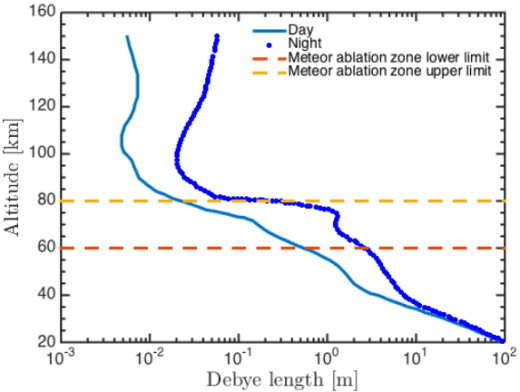From today's edition of Spaceweather.com comes a dystopian space pollution horror story:
WILL MEGACONSTELLATIONS DAMAGE EARTH'S MAGNETIC FIELD? Something unprecedented is happening in Earth orbit. In only a few short years, the satellite population has skyrocketed, more than doubling since 2020. In the past year alone, more satellites have been launched than during the first thirty years of the Space Age. Much of this activity is driven by SpaceX and its growing megaconstellation of Starlink internet satellites.

Environmentalists have raised many concerns about Starlink including
light-pollution of the night sky, a potentially hazardous
traffic jam in low-Earth orbit, and even
ozone depletion. Copycat mega-constellations by other companies and countries will only multiply these concerns.
Now there's a new reason to worry. According to
a new study by Sierra Solter, megaconstellations could alter and weaken Earth's magnetic field.
Solter is a graduate student at the University of Iceland, working on her PhD in plasma physics. She recently realized something overlooked by many senior colleagues: "More than 500,000 satellites are expected in decades ahead, primarily to build internet megaconstellations. Every satellite that goes up will eventually come down, disintegrating in Earth's atmosphere. This will create a massive layer of conducting, electrically charged particles around our planet."

To understand the scale of the problem, consider the following: If you gathered up every charged particle in Earth's Van Allen Belts, their combined mass would be only
0.00018 kg. Other components of the magnetosphere such as the ring current and plasmasphere are even less massive. For comparison, "the mass of a second generation Starlink satellite is 1250 kilograms, all of which will become conductive debris when the satellite is eventually de-orbited," says Solter.
Metal debris from a single deorbited Starlink satellite is
7 million times more massive than the Van Allen Belts. An entire megaconstellation is
billions of times more massive. These ratios point to a big problem.
"The space industry is adding enormous amounts of material to the magnetosphere in comparison to natural levels of particulate matter," says Solter. "Due to the conductive nature of the satellite debris, this may perturb or change things."
There is already evidence of this process in action.
A 2023 study by researchers using a high-altitude NASA aircraft found that 10% of aerosols in the stratosphere contain aluminum and other metals from disintegrating satellites and rocket stages. These particles are drifting down from "the ablation zone" 70 to 80 km above Earth's surface where meteors and satellites burn up.
Solter decided to look for changes in the electrical properties of the ablation zone--and she found something. A NASA model of the upper atmosphere shows a sharp increase in the "Debye Length" just where satellites break apart when they deorbit:

"Debye Length" is a number that tells researchers how far an unbalanced electrical charge can be felt in conducting plasmas. The fact that it changes abruptly in the same place satellites disintegrate may be significant.
Extrapolating into the future, Solter worries that satellite debris could weaken Earth's magnetic field--the same magnetic field that protects us from cosmic rays and solar storms.
"It's a textbook undergraduate physics problem," she explains. "Suppose you put a conductive shell (satellite debris) around a spherical magnet (Earth). Outside the shell, the magnetic field goes to zero due to shielding effects. This is a highly simplified comparison, of course, but we might actually be doing this to our planet."
Solter's preliminary study appears to show that the space industry is indeed perturbing the environment. "It is very concerning," she concludes. "We absolutely cannot dump endless amounts of conductive dust into the magnetosphere and not expect some kind of impact. Multidisciplinary studies of this pollution are urgently needed."
For more information, you can read Solter's original research
here.









